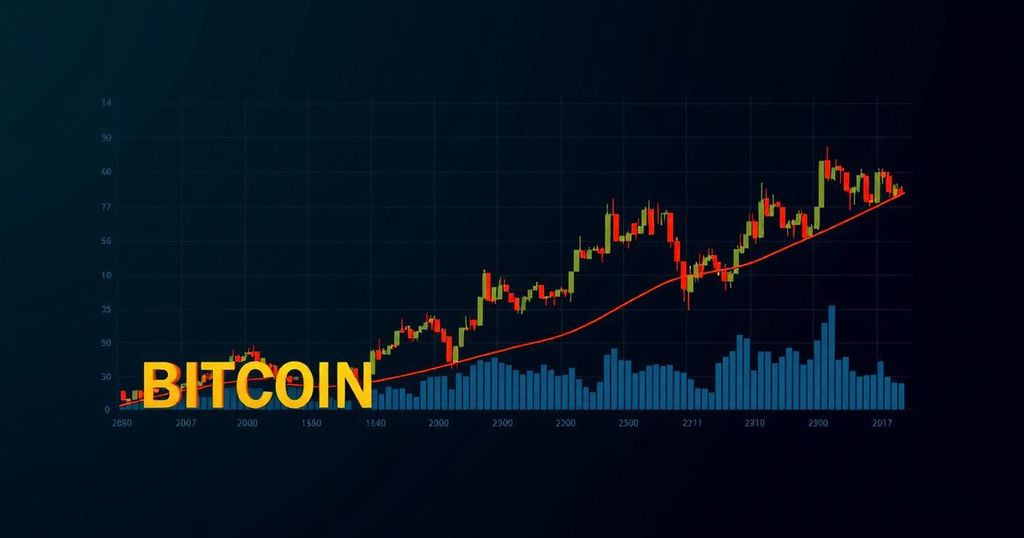Bitcoin’s Position in a Prolonged Downtrend amid Market Dynamics
The strength of Bitcoin has diminished as the cryptocurrency market remains entangled in a five-month downward trend. With prices reverting to levels familiar to many investors, traders are left contemplating whether to anticipate continued range trading, a period of consolidation, or a potential expansion towards new highs.
Analyzing key data points regarding Bitcoin’s price could help indicate whether it is time for Bitcoin to break free from its current range.
A significant development occurred when the US Dollar Index (DXY) fell to a year-to-date low. The correlation between DXY and Bitcoin price movements is a commonly monitored indicator for traders attempting to forecast Bitcoin’s trajectory. Traditionally, a weak DXY corresponds with an increase in Bitcoin prices. Last week, as DXY dipped below 101, Bitcoin managed to ascend from the $53,000 range.
Jamie Coutts, the chief crypto analyst at Real Vision, recently commented on this relationship, emphasizing, “Unless something fundamentally has changed, we are entering what @RaoulGMI refers to as the banana zone, or what I would describe as Bitcoin batshit season.”
Moreover, on August 23rd, Jerome Powell, the Chair of the US Federal Reserve, made remarks that many in the cryptocurrency sphere had been eagerly anticipating regarding potential interest rate cuts. Although specific details regarding the size of the cuts were not disclosed, Powell’s indications of a forthcoming reduction may signal a return to previous policies of quantitative easing, which many crypto investors believe could positively impact Bitcoin’s price.
Subsequent to Powell’s announcement, analysts from CryptoQuant observed a notable increase in Bitcoin’s price, rising over six percent, complemented by two-year bond yields dropping to their lowest point since March 2023. This bullish sentiment is mirrored in Wall Street’s optimistic outlook on equities, encouraged by the Federal Reserve’s acknowledgment of prospective interest rate cuts.
Despite a recent breakout of Bitcoin’s price to $65,000, demand appears to be subdued as markets stabilize. Glassnode’s data indicates that Bitcoin has reverted to an equilibrium state, with investor profitability returning to a neutral position. The MVRV deviation bands metric shows that the exhilaration following the ETF launches has significantly diminished. Furthermore, Bitcoin’s global percentage in profit metrics has reverted to its historical mean, signifying a stabilizing effect within the market.
However, recent data from CryptoQuant has highlighted a decline in Bitcoin demand. It noted that demand levels have turned negative recently, contrasting sharply with a robust growth observed in April when Bitcoin prices exceeded $70,000. This demand contraction has shifted from a 30-day growth of 496,000 Bitcoin, the highest since January 2021, to a negative growth of 36,000 Bitcoin.
Additionally, Glassnode analysts report a discernible decrease in liquidation volumes compared to the volatile landscape during Bitcoin’s all-time high in March. By analyzing the ratio of Bitcoin price to net liquidation volume, the analysts suggest that the market currently exhibits a reduced appetite for risk and leverage among traders.
In conclusion, while the landscape surrounding Bitcoin continues to evolve with specific indicators suggesting potential for price movement, the prevailing caution in demand and market dynamics illustrates the complexity of forecasting Bitcoin’s near-term trajectory. As always, potential investors should thoroughly assess their strategies and familiarize themselves with market conditions before making any financial commitments.
This article does not comprise investment advice or recommendations; readers are encouraged to perform their due diligence prior to any investment decisions.








Post Comment